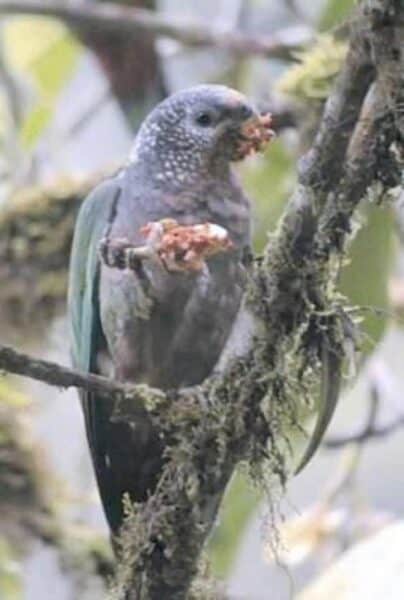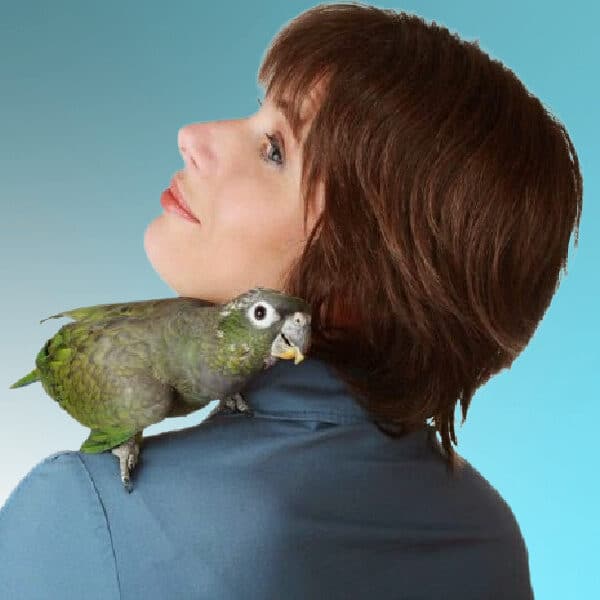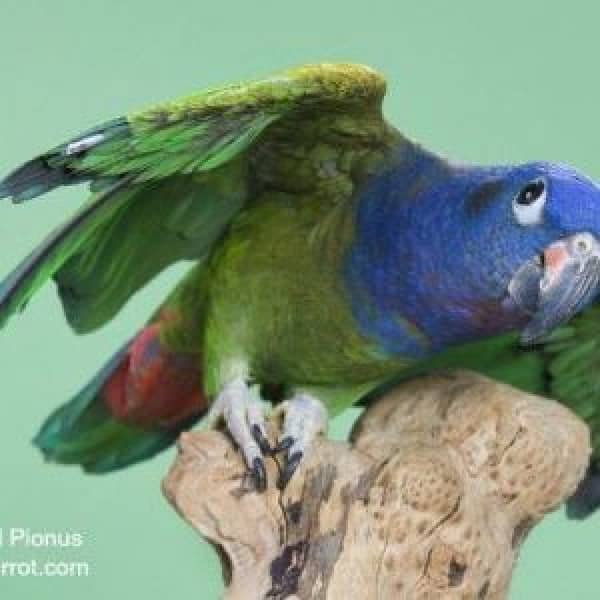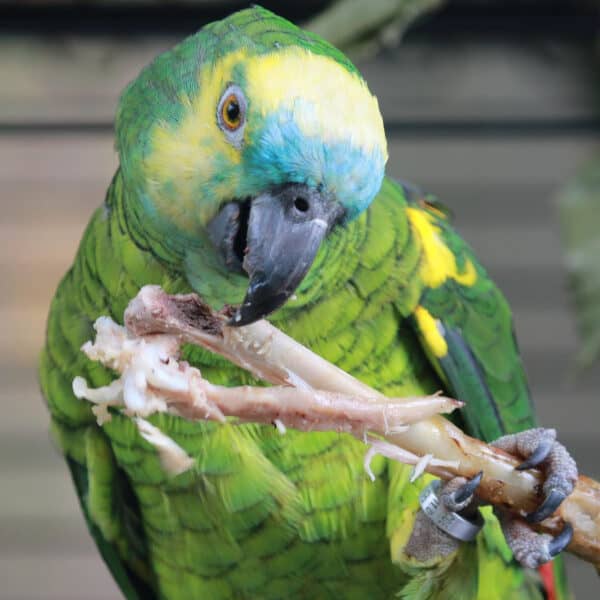Last Updated on by Catherine Tobsing
Windy City Parrot was on Western Avenue and as I’ve mentioned in the past, this is the longest continuous street in the world.
During the course of any given day, thousands of vehicles passed by us on this four-lane arterial corridor. Hundreds of pedestrians walk by to and from busy bus routes and stores that can be reached on foot – take that suburbia.
A day doesn’t go by that somebody doesn’t walk in and ask “do you sell birds?” To which we reply “no” which instantly reroutes the foot traveler. Our 800-number is seen by thousands of people daily on the web. Many of these web visitors will call and ask if we sell “parrots.”
That sentence in and of itself is a red flag. Why? 50% of the people who asked that question will hang up when we tell them “no.” The other 50% will ask the follow-up question – “do you know where I can buy a parrot?”
My response is typical “what kind of parrot are you looking for” not surprisingly many of the responses are similar to “one that talks.”
Sigh
Then there are the callers that ask “do you know where I can buy a macaw?”
My patented response will always be “what kind of macaw?”

This is where I always get the moment of uncomfortable silence and then a response of something like “one of those blue ones.”
Sigh…
I have a dozen patented responses none of which are customer-service friendly.
If you’re into macaws you know what I’m talking about. If you’re just lurking and trying to learn something you’ll find out there is something like 24 species of macaws ranging from the noble macaw which is about 12 inches long and a 100g to 150g, to the Hyacinth macaw which is about 4 feet long and can weigh as much as 2200g.
So now you know that if you call here with some vague specifications, I am not going to help you. You’re not serious and my spidey sense will guide me through our conversation.
Not many retailers will admit this but although we care about you, we care less about you and more about your bird which is who we are an advocate for.
It’s a rare thing that somebody will call up and ask for some very species-specific information as was the case today with a woman who asked to be placed on our email list. She was seeking information on a Blue-headed Pionus.
That got my attention so I googled “Blue-headed Pionus Windy City Parrot” and didn’t get a whole lot.
So guess what we can talk about for the next few minutes?
Although Pionus Parrots are about the same shape and size as small Amazon parrots, they just don’t get the same respect.
They’re not big parrots, they are not small parrots they are very nice midsized birds and compared to other species, relatively quiet.
Harley the Coral Billed Pionus that Thinks He’s a Turkey!
They’re great family pets. We don’t offer proposed psychological profiles of species like “they are quiet and standoffish” (until there are several children in the home playing loudly and then the bird gets noisy and aggressive) or something like that.
Digression-> The outcome your bird is expecting is not necessarily the outcome you are expecting. It’s the holidays. In the aforementioned scenario, knowing that say, visiting nieces and nephews for the holidays was anticipated and could possibly agitate a bird who’s not used to small people with high voices. Different unknown flock.
Do you have a travel/evac/sleep cage you can move the bird into a quiet room and then perhaps integrate him or her into the festivities slowly? Do you know the outcome your bird is expecting?
-
roughly 10-12 hours of daylight 12 months a year
-
flying in real “miles” daily
-
having dozens of square miles to explore
-
thinking that food acquisition is hard work
Before we returned to our regularly scheduled programming here’s one of those reminders like “remember to keep a blanket in your car in the winter”.
Common sense would dictate we’re going to keep our birds away from things like foil tinsel, Christmas light wires, and chocolate cookies.
Personally, I think one of the greatest threats to our pet birds this time of year is a lowly piece of – scotch tape.
It’s the rather odd duck that won’t be wrapping gifts for somebody this season. Besides paper and ribbon, gifts typically require scotch tape and scissors. Most of us were brought up to know how to hold the scissors and never run with one. But scotch tape? Evil?
Adhesives of any sort are a bird’s kryptonite. A benign-looking piece of scotch tape that a bird brushes against can instantly restrict the feather system leading to fright resulting in stress.
And you know exactly what to do when your bird is freaking out right? And you know how to remove scotch tape from feathers right? Now you’re hyperventilating over scotch-freakin’ tape – I hope.
Being prepared for a disaster will always result in a better outcome. At the very least you should know and practice the zombie death grip on your bird. Your bird should know what a towel is and how it’s going to be used to restrain him or her, and you know (smirk) that the best solution to remove an adhesive object from your bird’s feathers is personal lubricant <- family-friendly link – because you read this blog. Fine, You still don’t want to click on the link because your (fill in the blank) is in the room and you do not want to give him/her any ideas.
Many people will recommend cooking oil like peanut oil or olive oil to release an adhesive object from a bird, which does in fact work but then you have to remove the oil from the bird with soapy water. Dawn is the dish soap of choice used by environmentalists dealing with oil-covered birds from oil spills. For a single freaked-out parrot, we recommend personal lubricant because it’s water-soluble. Meaning you only have to clean the bird once not twice cutting the stress level in half.
Back to outcomes – Contrary to what your bird’s expecting – what it gets is
-
darkness at 4:30 in the afternoon in November
-
its wings lopped off
-
it’s lucky if it has a 6 sf cage to explore
-
a cage filled with food and water 24/7 because you love your bird
The two of you should get together and discuss some common outcomes that you can both live with without becoming crazy.
Pionus is a species of parrot. Recently I was having a discussion about how many species of parrots are there in last week’s blog post and it went something like this…
“…..you mention there are about 370 species of parakeets, not at all.
And yes Birds Unlimited – there are about 350 species of parrots AND 372 species of parakeets
Here’s a “blended list” of parrots & parakeets.
This is one of the “hard-to-find” Pionus parrots.
Feathered factoid: The Plum-Crowned Parrot is also called the Restless Parrot, due to its flighty, nervous behavior.
At some point, I’ll pluck out the ‘keets leaving only parrots on that list then create a parakeet-only list. Now here’s a top-level species list of parakeets and some don’t appear on the parrot list.”
And I left it at that. This is clearly a long-term project but hopefully, within the next year I will have two distinct lists of parrots and parakeets along with I guess the third list of crossovers and I imagine it to be somewhere in the mid 700’s (number of species of parrots and parakeets) – stay tuned.
I promised you Pionus parrots and now it’s time to deliver.
There are eight species of Pionus’ without splitting hairs.
Apparently, there are some old guys sitting in big leather chairs with patches on their sweater elbows smoking pipes discussing things like “should the Blue-headed parrot (or blue-headed Pionus),
be subdivided into two additional species –
Paler blue-headed parrot (or paler blue-headed Pionus),
Reichenow’s blue-headed parrot (or Reichenow’s blue-headed Pionus)?
I voted – we don’t care we’re sticking with eight.
Many people confuse Pionus with Amazons (which we’ll save for another day)

White capped Pionus parrot on shoulder
Pionus range from about 10 inches long and 180g (white-capped) to a blue-headed which can be 12 inches long and 260g. What’s common to all the species are the red feathers underneath (under tail-coverts) their square short tails. Some old-schoolers will refer to them as Red-vented parrots because of this.
They all have a naked eye ring (which can vary in color) and a naked cere (nose). If you really don’t know a lot about Pionus you might think their beaks look overgrown but that’s the way they are.
Personally, I think they have one of the most complex shadings of feather colors of any parrot. Misting them can bring that out and we will have to do some research to see if there are additional ultraviolet colors that only the birds themselves can see on one another.
By the way boys and girls all look the same so you’d have to get them DNA sexed to find out what you have, should you acquire one. Where can you get one – I haven’t the faintest idea and some are harder to obtain than others I’m told. But then again anything can be gotten with perseverance (and money).
A Pionus parrot can live up to 40 years
Written by Mitch Rezman
Approved by Catherine Tobsing
Author Profile
Latest entries
 The Traveling BirdJune 26, 2025Can You Name 5 Parrot Species That Are Living Wild in the USA?
The Traveling BirdJune 26, 2025Can You Name 5 Parrot Species That Are Living Wild in the USA? Bird BehaviorJune 26, 2025How is it Parrots Are Problem Solvers Social Animals and Even Use Tools?
Bird BehaviorJune 26, 2025How is it Parrots Are Problem Solvers Social Animals and Even Use Tools? Bird & Parrot AnatomyJune 25, 2025How a Tiny Chemical Modification Makes Parrots Nature’s Living Paintings
Bird & Parrot AnatomyJune 25, 2025How a Tiny Chemical Modification Makes Parrots Nature’s Living Paintings PigeonsJune 20, 2025How Do Parrots Thrive in Cities Outside Their Native Habitats?
PigeonsJune 20, 2025How Do Parrots Thrive in Cities Outside Their Native Habitats?




